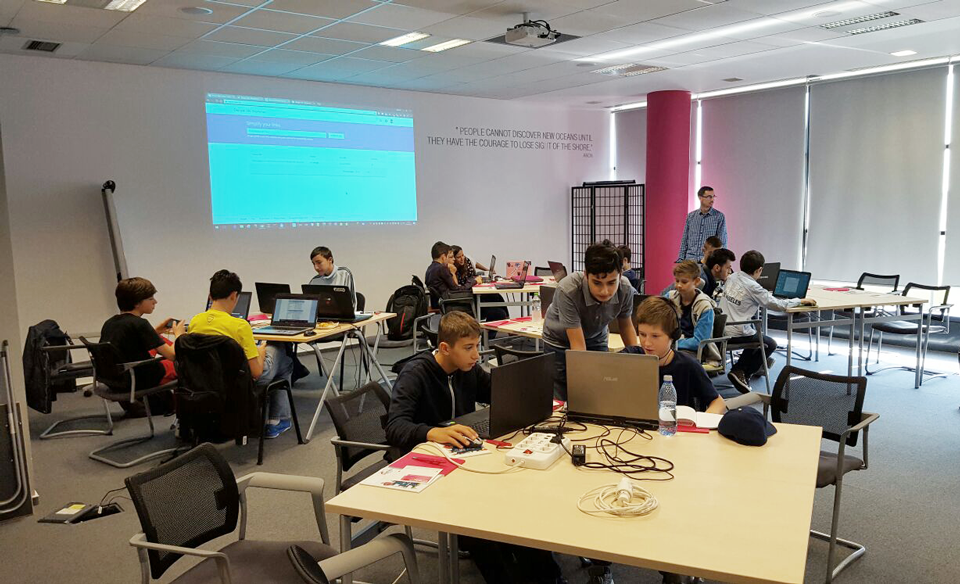It’s the last Saturday in September, and more than 100 children, teenagers, and their parents are gathered on the second floor of an office building in Bucharest. Some arrived as early as 9 AM. Now, an hour later, people are eating, drinking coffee or checking their children’s names off the lists attached next to the conference halls that have been converted into classrooms. Suddenly, children start trickling into their assigned rooms: Beginners Scratch, Advanced Scratch, Arduino, Khan Academy and Java, added this year as a discipline. It’s this year’s first Bucharest North CoderDojo class, and it’s about to start.
Every year since 2011, children aged 7 to 17 have been able to learn programming in CoderDojo workshops, an international movement launched in Dublin. A CoderDojo is actually a creative hub where children can learn programming, web development, app development, and game development in an informal environment, as an extra-curricular activity. A hub is started and developed by volunteers, with sessions taking place every month. Launched the same year as the one in Dublin, the North Bucharest CoderDojo is the oldest in Romania, and it takes place every month in the training headquarters of Telekom Romania, which offers teens a comfortable space for learning, as well as steady high-speed internet connection.
Teodor Tatu-Zevedei is one of the teenagers who have grown along with North Bucharest CoderDojo. He started attending the workshops when he was 11 and now, at 15, he has already been awarded in Dublin for a project he has developed with two colleagues. Together with Alexandra Neagu and Radu Salavat (and guided by volunteer mentor Radu Tebeică), Teo won the Best International Enterprise prize for Warehouse 2.0, a mobile app meant to digitalize a warehouse. Designed for companies, it helps the owners and employees of a warehouse to better use and arrange the merchandise, and control movement.
Practically, once the employees install the app on their smartphones, they will know, by simply scanning the products, where they should be placed inside the warehouse after being delivered and which merchandise should be packed for a new delivery, explains Tebeică. Every product is digitized: it gets a barcode, and the app system knows where it is all the time. Based on special sensors that would be added to the warehouse, the system would detect once a delivered merchandise is inside, shut the warehouse door, and let the employees know of any unusual activity – for example if the door opens, and a product gets taken away without scanning. Although this idea is not new, the breakthrough lies in the fact that the app designed by Teo, Alexandra and Radu is cheaper and easier to use; no new hardware is needed, since the app runs on hardware that already exists in smartphones.
“Through learning by playing, children can become future experts in computer programming or developing M2M (machine-to-machine) or the Internet of Things solutions”, says Alina Iamandi, the coordinator of the program and part of the Media Relations & External Communication team at Telekom Romania. The company supports digital education and invests in programs with long term results, Iamandi adds. “We are sure that their ideas will soon be among the business solutions that our company and others will develop for the market.”
This year, Teo is back in the CoderDojo workshops as an advanced awarded student, as well as a beginning mentor. Throughout the first day, he helped kids create accounts for Khan Academy and Arduino classes, going through everything step by step, and making sure no one was left behind. He was, at one point, switching classrooms and looking for his badge when one of the mentors took notice and said: “Don’t worry, Teo. You’re already one of us.”
Part of a series dedicated to the supporters who help make the conference possible. We thank them for their contribution. For more information on how to apply as a student or a volunteer mentor for CoderDojo classes, go to http://coderdojo.ro/.

